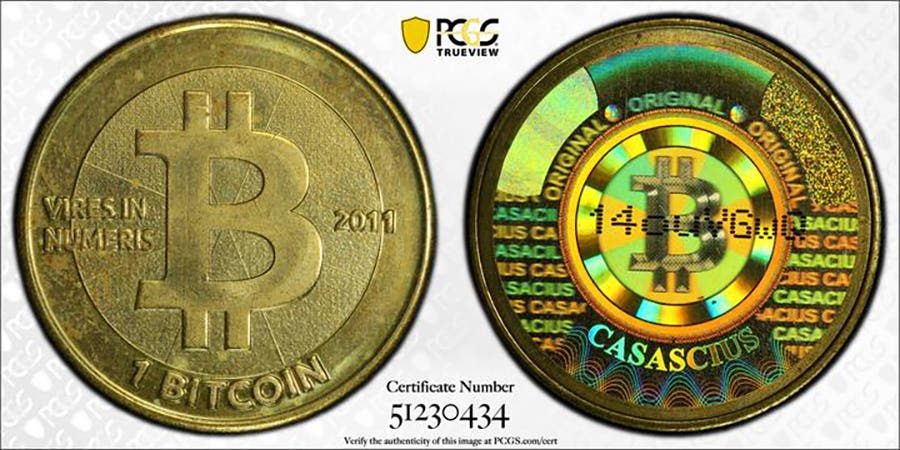Potential Pitfalls of Government Digital Currencies
Federal Reserve Chair Jerome Powell participated by video in a panel on digital currency hosted by the Banque de France on Sept. 27. In his remarks he said, “The good…
Federal Reserve Chair Jerome Powell participated by video in a panel on digital currency hosted by the Banque de France on Sept. 27.
In his remarks he said, “The good news, I suppose, is that the interaction – from a financial stability standpoint – the interaction between the DeFi [decentralized finance, which includes cryptocurrencies] ecosystem and the traditional banking system and traditional financial system is not the large at this point. That situation will not persist indefinitely. There’s a real need for more appropriate regulation, so that as DeFi expands and starts to touch more retail customers and that sort of thing, so that appropriate regulation is in place.”
Powell went on to reiterate that the Federal Reserve is continuing to study the idea of a U.S. government digital currency, but does not expect any near-term decisions. In earlier September, Powell had stated that any digital dollar would need to meet four guidelines: 1) protect privacy, 2) go through intermediaries in the financial system, such as banks, 3) be widely transferable, and 4) use identity verification to combat money laundering.
In January this year, the Federal Reserve issued a discussion paper on digital currency, which you can read here.
This discussion paper outlined some of the potential risks of a central bank digital currency (CBDC). One major risk is that more privately held funds would be on deposit in a CBDC rather than existing banks and other financial institutions. This shift would reduce the amount of funds that the financial system would have available to extend loans and mortgages, potentially creating a liquidity squeeze. Another identified risk is that it might increase the possibility of a run on the financial system where, in troubled times, people could easily transfer accounts held elsewhere to the CBDC.
However, this discussion paper did not list all of the risks to the public of a government/central bank digital currency.
As Powell explained this week, transactions using a CBDC would not be anonymous. Effectively, the government or central bank would know from where you receive and to where you spend your funds. Many people would not be comfortable with the regulators knowing which businesses, medical services, and non-profit organizations they patronize.
Another risk is that funds in the custody of the government or central bank could be more easily devalued at a moment’s notice.
The technology used for a digital currency could also be instituted to restrict how the funds are spent. If a government or central bank were to decide that a certain business or non-profit organization was prohibited from receiving funds, it could easily implement restrictions on such fund transfers.
Another consideration is that in tax or financial disputes with the government or central bank, your funds could be seized more easily, putting citizens and taxpayers at a significant disadvantage.
It would even be possible for the government or central bank to arbitrarily seize a percentage of a CBDC under the guise of a national emergency.
In late 2020, the Italian government tried to discourage the use of cash payments and encourage higher usage of credit and debit cards. Beginning Dec. 1, 2020, the Italian government announced it would refund to individual Italians 10 percent of all their credit and debit card spending up to a maximum of 3,000 euros.
Further, the 100,000 people who made the largest number of debit/credit card payments in a six-month period would get a “super cash-back” payment of 3,000 euros. In addition, beginning in 2021, Italian citizens could only deduct medical expenses on their personal income tax forms if they attached copies of the electronic payment receipts.
These financial incentives sparked a significant changeover to use less cash and more plastic for payments, but nowhere to the extent that the government hoped. The experience in Italy just to try to reduce using cash for payments provides some indication of just how much public aversion there might be to any attempt by the U.S. government or Federal Reserve Bank to adopt any digital currency.
Patrick A. Heller was honored as a 2019 FUN Numismatic Ambassador. He is also the recipient of the American Numismatic Association 2018 Glenn Smedley Memorial Service Award, 2017 Exemplary Service Award, 2012 Harry Forman National Dealer of the Year Award and 2008 Presidential Award. Over the years, he has also been honored by the Numismatic Literary Guild (including twice in 2020), Professional Numismatists Guild, Industry Council for Tangible Assets and the Michigan State Numismatic Society. He is the communications officer of Liberty Coin Service in Lansing, Mich., and writes Liberty’s Outlook, a monthly newsletter on rare coins and precious metals subjects. Past newsletter issues can be viewed at www.libertycoinservice.com. Some of his radio commentaries titled “Things You ‘Know’ That Just Aren’t So, And Important News You Need To Know” can be heard at 8:45 a.m. Wednesday and Friday mornings on 1320-AM WILS in Lansing (which streams live and becomes part of the audio archives posted at www.1320wils.com).








